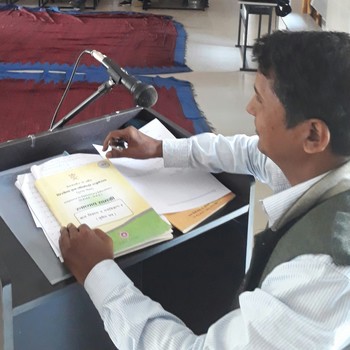What is ecological succession in biology?
5 Answers
Ecological succession is the process in which the structure and composition of a community evolves over time.
Explanation:
Ecological succession is the process in which the structure and composition of a community evolves over time. This process is predictable for the most part.
Species composition, density, and distribution of that community is constantly changing as time progresses.
The first species to arrive either after a disturbance, such as a flood, or when the land is first formed, such as a new volcanic island, are called pioneer species. They are the first colonizers. Grasses, mosses, lichens, and other plants are pioneer species. Pioneer species may even be able to survive without soil. These pioneer species are often quite hardy and are thus able to survive in a harsh environment. Pioneer species also typically have light seeds that disperse easily through wind.
As these pioneer plants live, attract consumers, and die, soil is either formed or improved to the point where other plants will begin to grow. As these new species reach and spread across the environment, it is no longer suitable for pioneer species, which will eventually disappear or compose a minimal part of the community.
Herbs and then shrubs will eventually arrive and finally trees. Below is an example of ecological succession of a boreal forest.

A community may eventually reach its climax, the point where the composition remains mostly stable unless some sort of disturbance occurs or changes (climatic, evolutionary) happen over a very long period of time. The community would then be called a climax community .
Sources:
http://www.field-studies-council.org/urbaneco/urbaneco/introduction/succession.htm
http://www.countrysideinfo.co.uk/successn/intro2.htm
The gradual and orderly process of change in an ecosystem brought about by the progressive replacement of one community by another until a stable climax is established.
Another example of Ecological succession, a fundamental concept in ecology, is the process by which a natural community moves from a simpler level of organisation to a more complex community. Succession is a natural process that occurs after some form or disturbance which simplifies the system
The ecological succession is the changes in an ecological community over time.
Explanation:
The ecological succession is the changes in an ecological community over time. These changes are predictable and orderly. In community, the species composition will hange over time as some species become more prominent. The community develops over time, vegetation grows taller, and the community becomes more established.
Two different types of succession—primary and secondary—have been distinguished. On the basis of in water or laand, succession may be hydrosere and xerosere.
Ecological succession is the process of change in the species structure of an ecological community over time.
Explanation:
It is a phenomenon or process by which an ecological community undergoes more or less orderly and predictable change following a disturbance or the initial colonisation of a new habitat.
Succession that begins in new habitats, uninfluenced by pre existing communities is called primary succession, whereas succession that follows disruption of a pre existing community is called secondary succession.
The study of succession remains at the core of ecological science.
Ecological succession is gradual replacement of organisms at bare places.
Explanation:
The ecological succession is gradual replacement of plants and animals at the bare places. The succesion may be primary or secondary in nature.
From the primary colonizers, the climax communities are formed. The ecological succession may be hydrosere or xerosere. Than you





